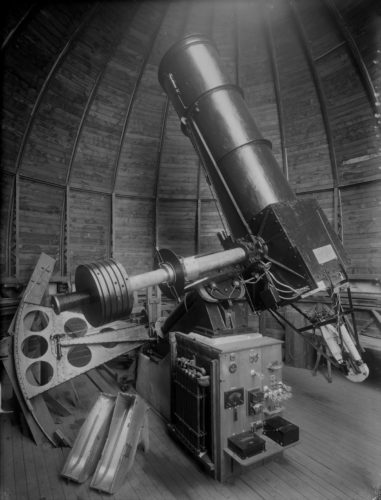Foster and ALMA: Chile’s first international observatory and its most modern one join forces on National Heritage Day
This Sunday, May 31, visitors will have an excellent opportunity to learn about the history of astronomy in Chile at the Foster Observatory, located on San Cristóbal Hill in Santiago, as part of national Heritage Day. Through videos and lectures, astronomy lovers and those simply curious about the country's heritage treasures can learn about the observatory from the inside, with no entry fee. In addition, volunteers from the ALMA Observatory will be on hand to answer questions and distribute information from its observatory as of the European Southern Observatory (ESO) and the National Radio Astronomy Observatory of the United States (NRAO).
"We are thrilled to be participating. Foster was the first international telescope built in Chile, in a very early era of astronomy," said Lars-Åke Nyman, head of science operations at ALMA. "Since then, Chile has become home to a significant portion of the world's astronomy infrastructure, and now has very advanced projects such as ALMA."

Foster Telescope Located on the San Cristobal Hill in Santiago de Chile, the Dr. Manuel Foster Telescope has two mirrors: the primary of 93 cm and the secondary of 24.2 cm
The historic observatory will offer guided tours from 10:00 a.m. to 4:00 p.m. this Sunday, May 31. Visitors will be able to see the original equipment: two mirrors (the primary one, measuring 93 cm and a secondary mirror measuring 24.2 cm); a spectrograph and other contraptions that enabled the observatory to obtain National Monument status in 2010.
"The opening of the Foster Observatory is an opportunity to get to know one of Santiago's hidden treasures. Foster is the first international astronomical observatory that was installed in Chile to take advantage of the exceptional window to observe the Universe, and started a very strong trend throughout the 20th century," said Leonardo Vanzi, an astronomer and professor at the Astro-Engineering Center at Catholic University of Chile, which manages the Foster Observatory.
The observatory was the first building constructed at the top of San Cristóbal Hill. In 1903, then-President Germán Riesco signed an authorization allowing the University of California's Lick Observatory to install a twin of its observatory in the Northern Hemisphere. The observatory in Chile was initially known as the Mills Observatory (in honor of the man who financed the first astronomical expedition). Its mission was to prepare a catalog of radial velocities of bright stars in the Southern Hemisphere and later work included observations of Venus, the Moon and Mars. In the observatory's first years of operation, it was one of the nine largest telescopes in the world, generating important findings for the development of astronomy both in Chile and internationally.
The observatory is named for Dr. Manuel Foster Recabarren, who purchased the facility in 1929 and later donated it to the Catholic University.
More information
ALMA is a partnership of ESO (representing its member states), NSF (U.S.) and NINS (Japan), along with NRC (Canada), NSC and ASIAA (Taiwan), and KASI (South Korea), in cooperation with the Republic of Chile. The Joint ALMA Observatory is operated by ESO, AUI/NRAO and NAOJ.
Contact:
Valeria Foncea
Education and Public Outreach Officer
Joint ALMA Observatory
Santiago, Chile
Tel: +56 2 467 6258
Cell: +56 9 75871963
Email: [email protected]

